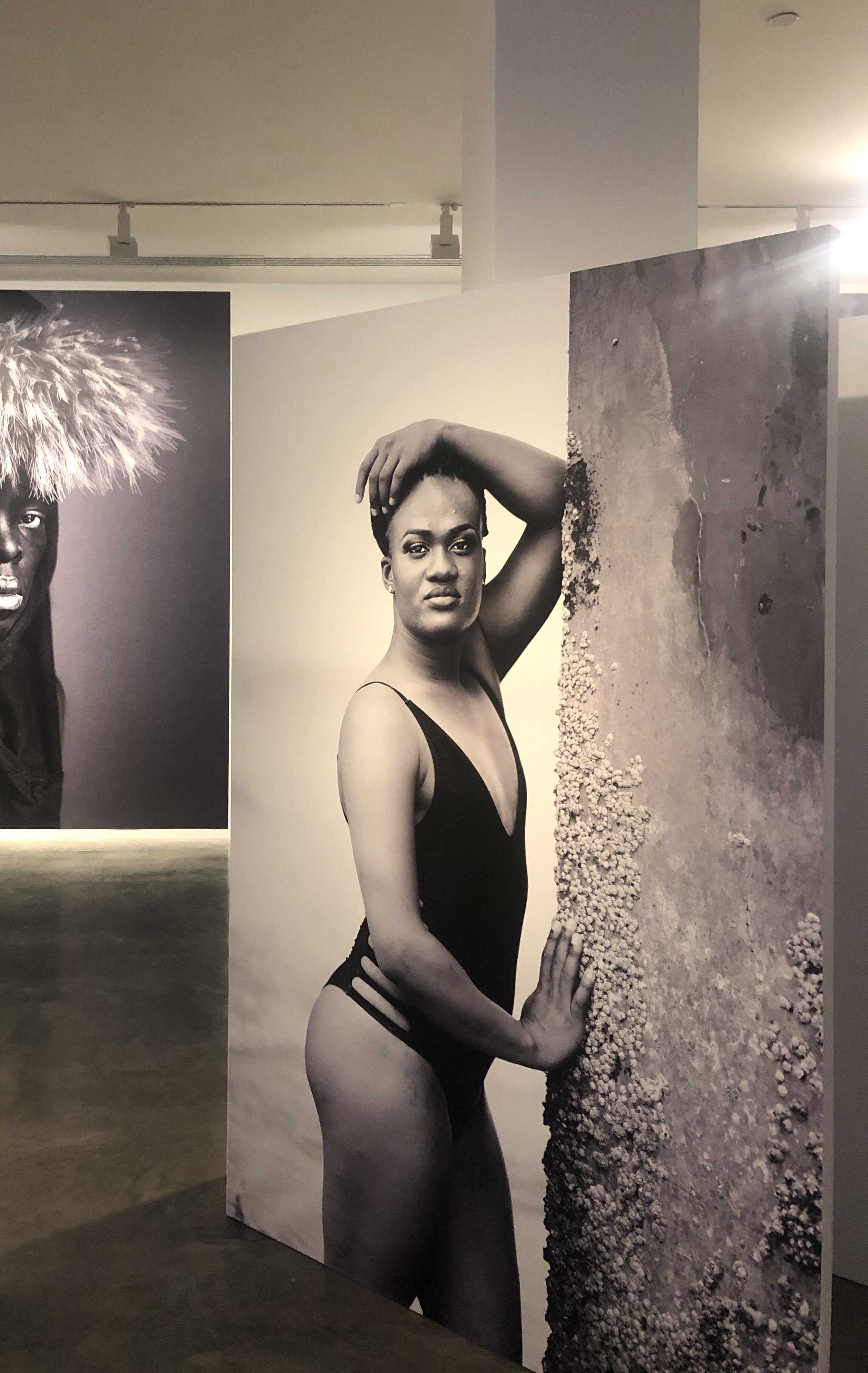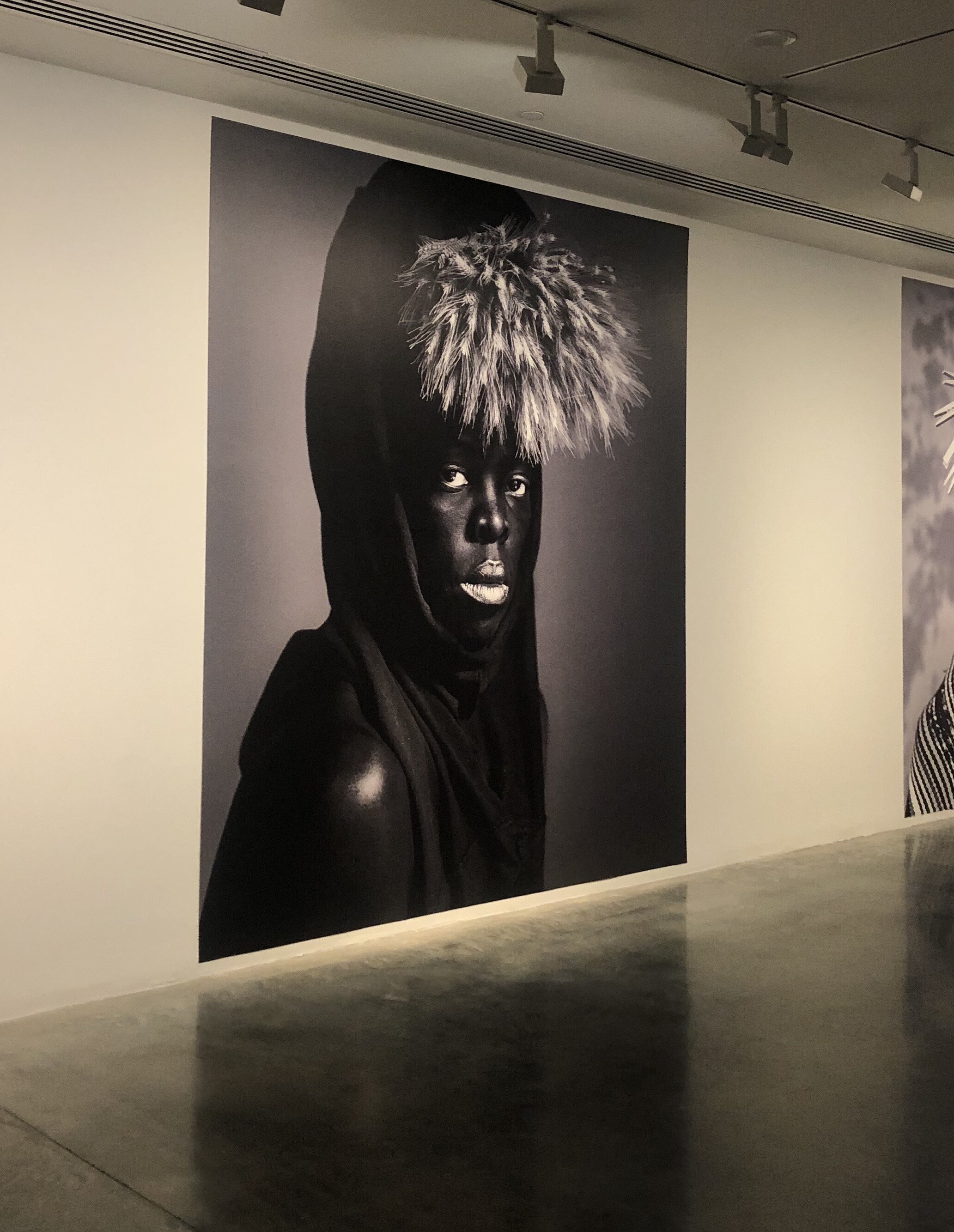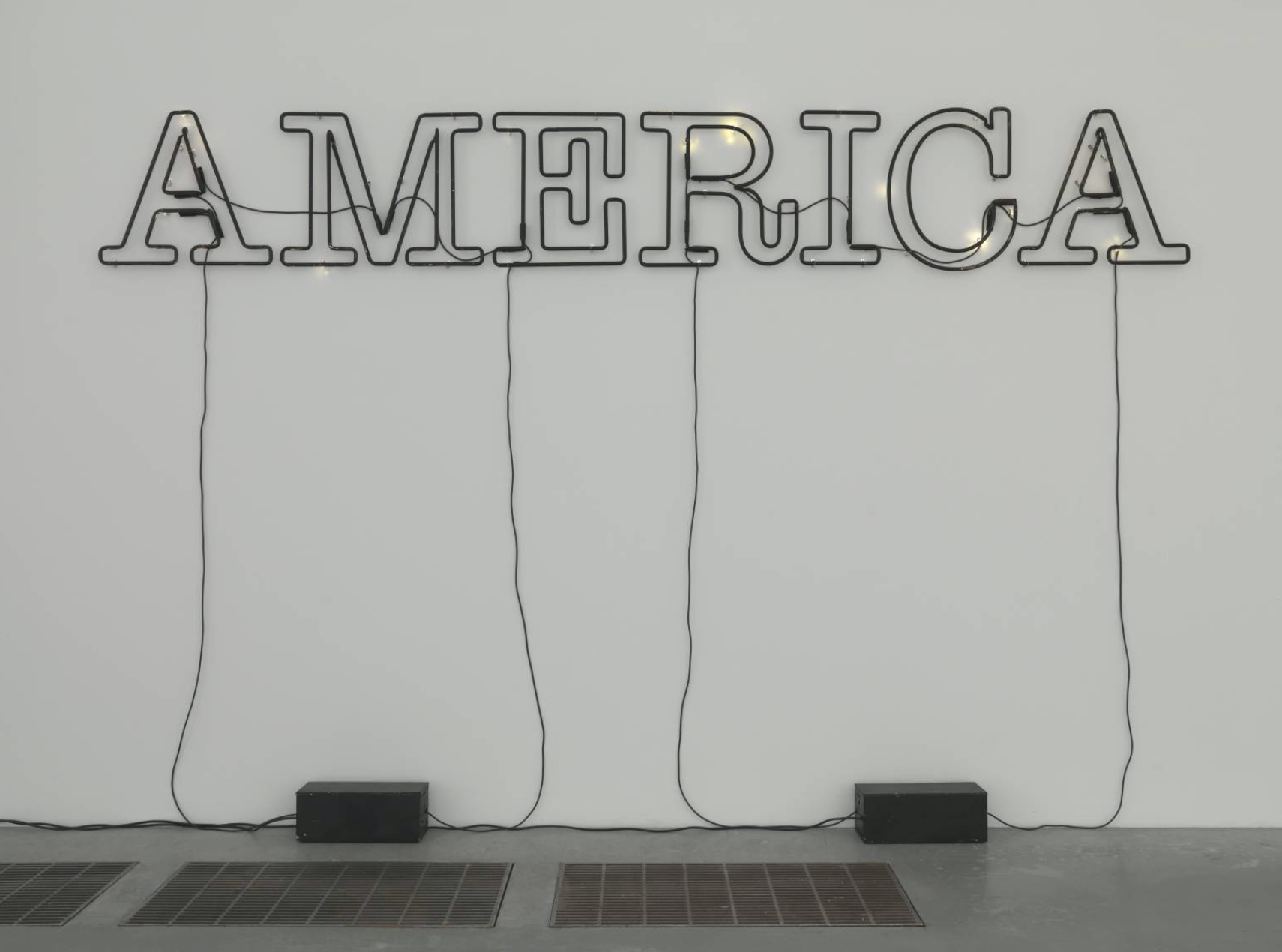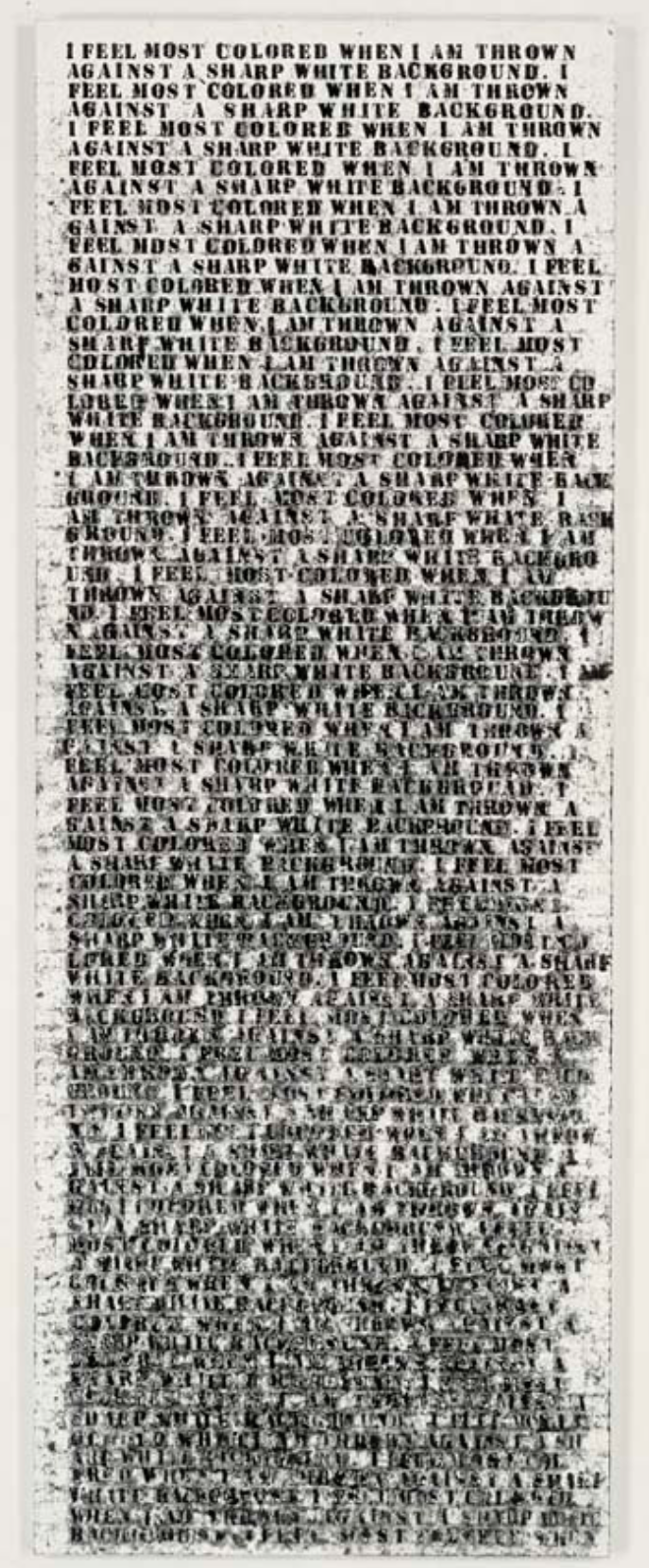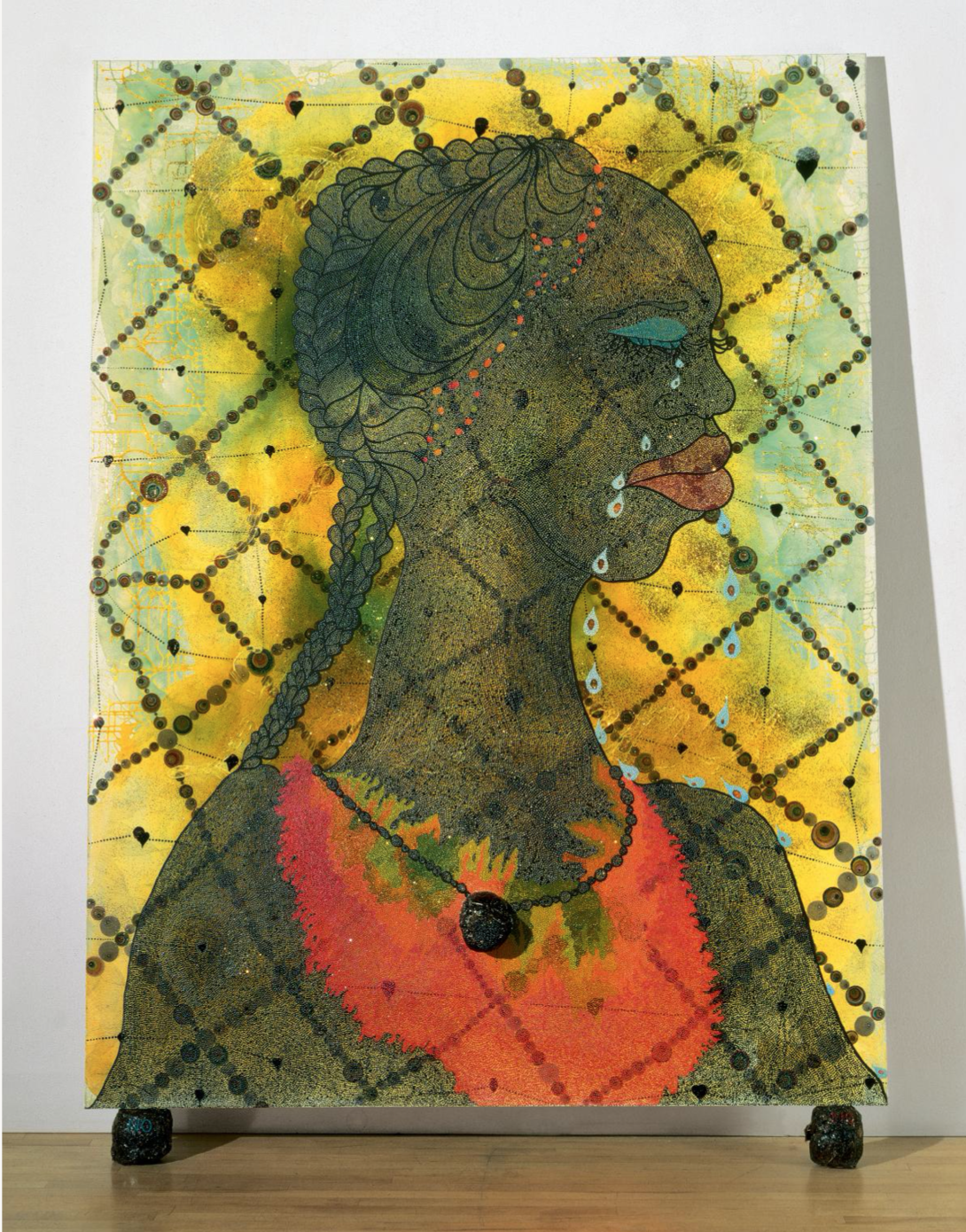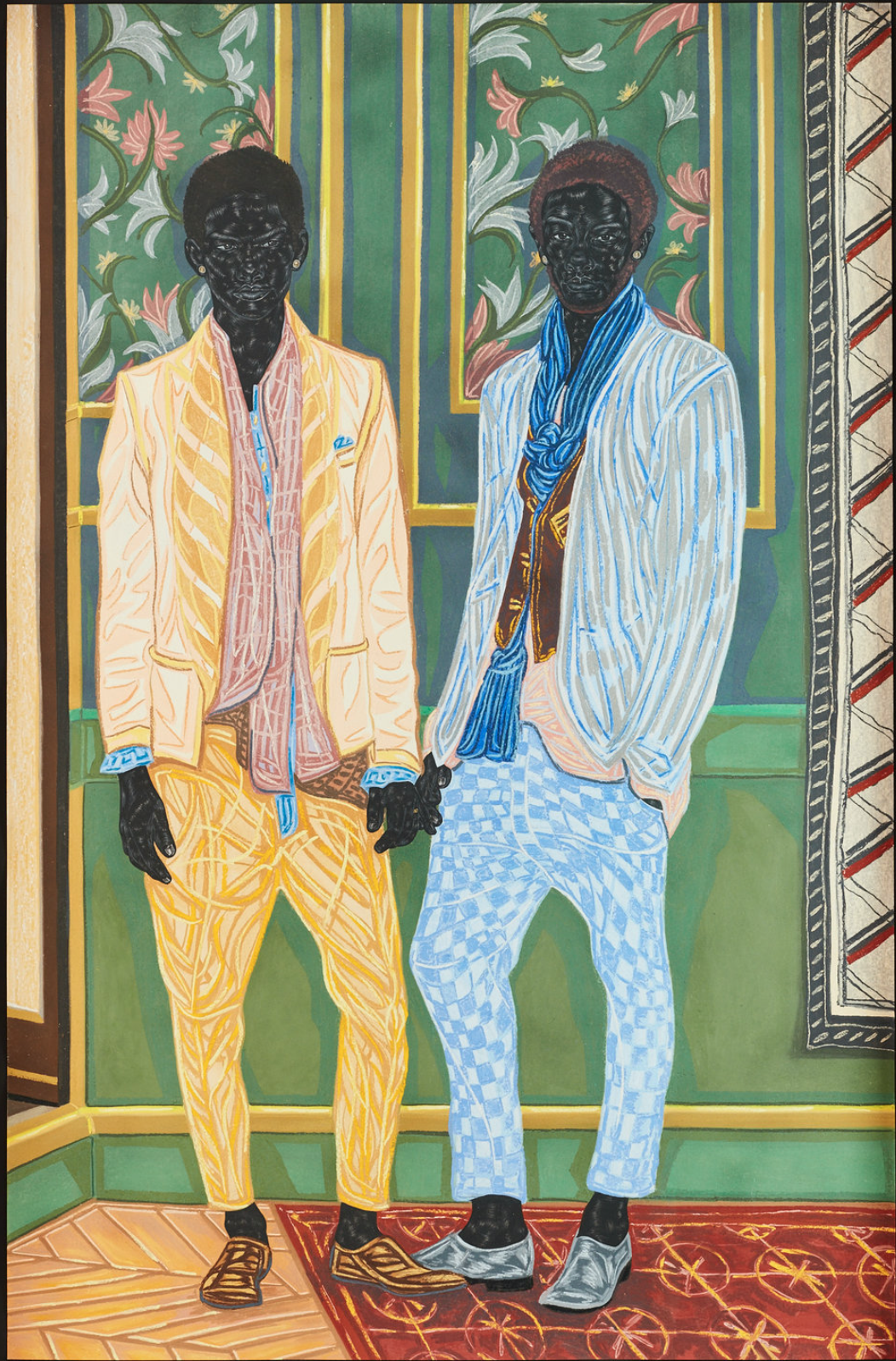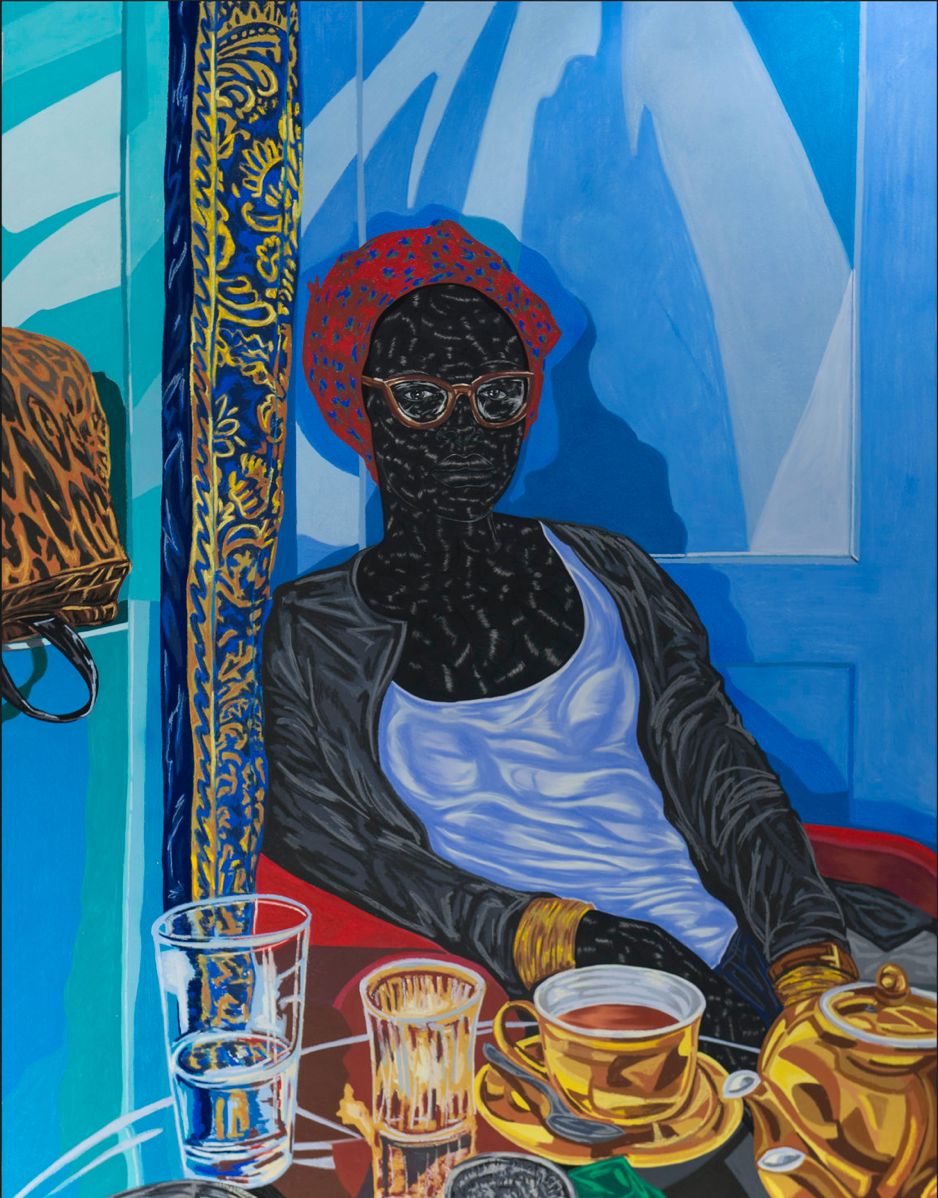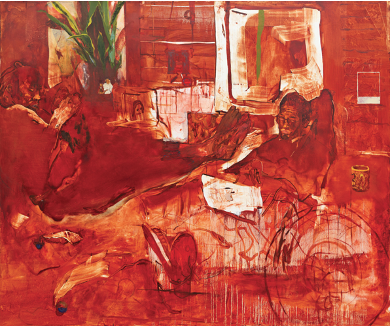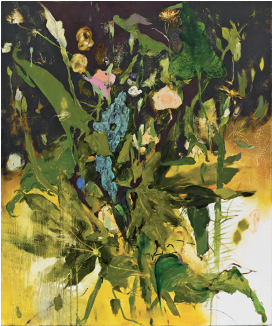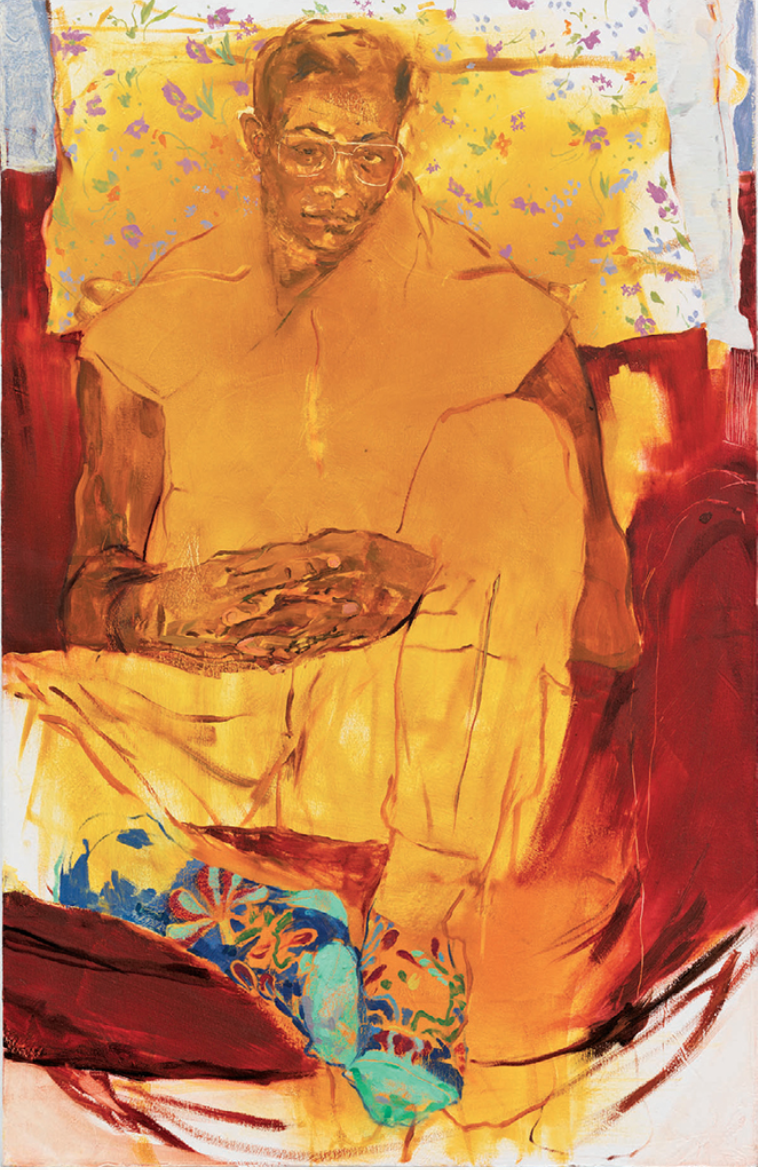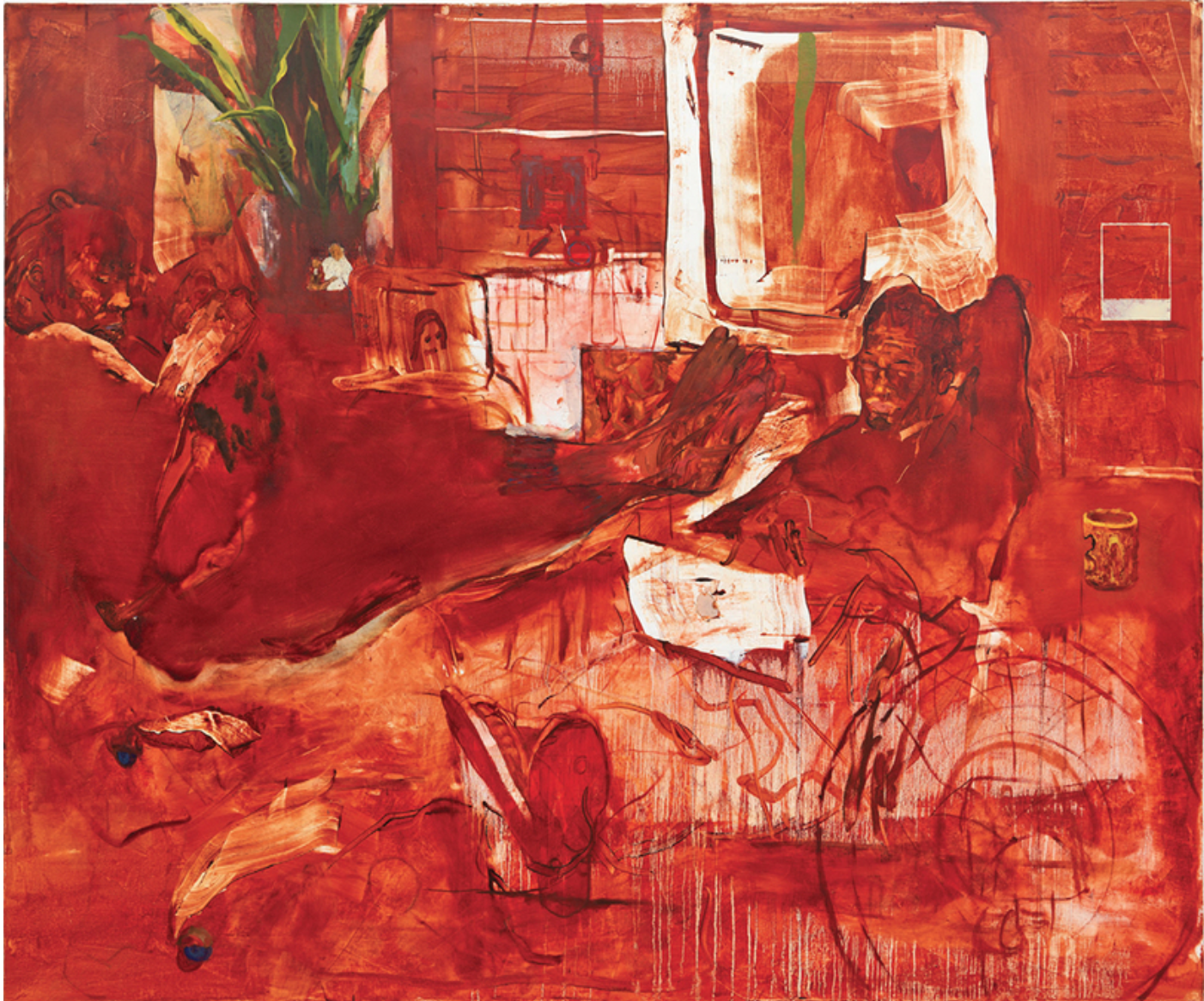Contemporary Black Artists to Celebrate
In support of the growing strength and international recognition of the Black Lives Matter movement, this article will share with you a number of prevalent and successful contemporary Black artists. This article does not aim to categorise or define these artists by their race, but instead aims to highlight and draw your attention to their individual works in their own rights. Due to whitewashing in the media and institutionalised racism within many art organisations, you may not have previously come across these artists or their works before, and therefore this article aims to share and advocate for the voices and creative works of several important Black artists. This article covers just handful of talented individuals, but hopefully it encourages you to follow them and continue your support and engagement with more Black artists and creatives. As a young, white woman of privilege, I make no attempt here to impart any “wisdom” or to act as an authority of taste, and these artists certainly do not need my approval. I instead wanted to share and use what I have learnt through my study of History of Art as a university student so that your minds and eyes can be enriched by the works of these wonderful artists.
Zanele Muholi
Zanele Muholi is a South African Artist whose photography seeks to provide expression and representation for the LGBTQI+ community. Muholi’s continuing series Brave Beauties, 2014-present displays Transwomen with dignity and reverence through stunning black and white portraits. Many of the photographed individuals have participated in and won beauty pageants held by LGBTQI+ communities in South Africa. The series shares the importance and beauty of those who exist within the community yet who are rarely, represented within mainstream media and are instead often both verbally and physically attacked for their appearances.
Muholi’s Somnyama Ngonyama series, 2015-18 also deals with issues of representation as it consists of a number of self-portraits taken by the artist whilst visiting various international locations which respond to current or historical events. Muholi presents the self-determined images of their Black body in order to provide and advocate for the representation of Black individuals in images directed by Black individuals, stating: “We’re talking about ‘us doing us’ for the world to see that we exist, and we are present.”
Kara Walker
Kara Walker is an American artist who works over a range of media within her works but most famously with silhouettes, her works often explore themes of race, violence and gender. Walker’s most recent project Fons Americanus, 2019 is currently on display in the Tate Modern’s Turbine Hall in London. The monumental work consists of a 13-metre-tall white fountain echoing the Victoria Memorial outside of Buckingham Palace however, it is made from mostly recyclable and non-toxic materials. Water is a fundamental element within work as it refers not only to the mode of transportation of slavery but also to the horrors that enslaved African people suffered at sea during transatlantic slave trade. In its exploration of the relationships between Africa, America and Europe, Walker’s fountain with its sharks, helpless victims and caricatures of historical figures or concepts subverts the typical role of a monument or memorial to the empire and challenges notions of history and authority. Walker speaks about the difficulties of being a Black Artist, stating: “The only thing people want to hear from me is about slavery because, apparently, the only thing I am is Black.”
With this in mind, Walker explains that she decided to focus her work around slavery in order to discuss the troubling themes which are too often left unaddressed in American society.
Kara Walker, Fons Americanus, 2019, Tate Modern, London. Photographs: Alexandra McDermott Brown
Glenn Ligon
Glenn Ligon is an American artist who creates conceptual works which often explore notions of race and identity. Ligon works over a wide array of different media including painting, neon, installation and drawing. Ligon’s Untitled, 2006 which spells ‘AMERICA’ in neon lights and paint can be interpreted as an emblem of the nation. Ligon explains that he created the work to represent America after the military first entered Iraq and Afghanistan in the early 2000s. Ligon, portrays America in dark, unaffected letters to represent the countries sinister actions, yet among the letters an amount of light still shines through indicating perhaps a remaining sense of hope or promise.
Throughout many of Ligon’s works, he continues to express ideas about American society and particularly themes of identity. Such as Untitled (I Feel Most Coloured When I Am Thrown Against a Sharp White Background) 1990, which continues to discuss the sinister side of the nation’s culture and history.
Chris Ofili
Chris Ofili is British artist and a Turner Prize winner for his painting No Woman, No Cry, 1998. The painting rests upon two balls of elephant dung, a medium Ofili often works with and frequently stirs attention towards his works. The work depicts Doreen Lawrence, the mother of Stephen Lawrence who was only a teenager when he was a victim of racial violence and was murdered in London in 1993. Five years after his death a report was published declaring the police investigation had been impaired by a lack of proficiency and racism on an institutional level. Ofili pays respect and tribute to Stephen and also to Doreen who is portrayed in quiet grief, expressed with strength and dignity. Her pain can be seen in her tears of which each drop is filled with images of her son.
No Woman, No Cry, 1998. Chris Ofili, Photo: Tate, London 2020.
https://www.tate.org.uk/art/artworks/ofili-no-woman-no-cry-t07502
Sonia Boyce
Sonia Boyce is a British Afro-Caribbean artist whose work stems over a range of media, she is also the first Black Woman ever to be chosen to represent Britain at the Venice Biennale 2021. Boyce’s early works centred around themes of race, gender and identity but her focus has since shifted towards a collaborative approach which aims to bring audiences and participants together in conversation. Boyce’s project We move in her way; Dancers, 2017 at the Institute of Contemporary Arts, London is comprised of performances by dancers of which the audience are invited to participate in. The viewers are encouraged to take active participation in their response to the work as they make their way around the space and sculptural objects with the dancers. Improvisation plays a key role in the organic nature of the work. Ideas of power and authority are shifted as the typical relationship between viewer and performer becomes distorted.
Sonia Boyce, We Move in Her Way: Dancers, 2017. Institute of Contemporary Arts, London. Photograph: George Torode.
https://archive.ica.art/whats-on/gallery-tour-sonia-boyce-we-move-her-way
Kehinde Wiley
Kehinde Wiley is an American artist best known for his paintings of portraits which are reminiscent of European paintings by old art historical ‘masters’ however, in Wiley’s portraits the subjects are instead comprised of everyday African American men and women. Napoleon Leading the Army over the Alps, 2005 plays with the imagery of Jacques-Louis David’s painting of Napoleon Bonaparte crossing the Great St Bernard Pass during one of his military campaigns and it features a contemporary Black Man valiantly riding the horse instead. Not only do Wiley’s portraits portray African American individuals with pride, beauty and respect but they also highlight the ways in which mainstream historical and cultural understanding has ignored and eliminated Black History.
Kehinde Wiley, Napoleon Leading the Army over the Alps, 2005. Oil on canvas. Brooklyn Museum, New York.
Another of Wiley’s most famous portraits is his painting of former United States President Barack Obama who is portrayed with a calm assertiveness as he sits on a wooden chair. This work does not follow an art historical reference but instead the flowers in the background of the portrait were chosen as they have personal links for Obama. Through this portrait Wiley creates his own art historical masterpiece as he immortalises the achievements of Obama as the first African American President of the United States.
Kehinde Wiley, Barack Hussein Obama, 2018. Oil on canvas. National Portrait Gallery Collection, London.
Toyin Ojih Odutola
Toyin Ojih Odutola is a Nigerian-American artist who primarily creates drawings which play with the traditions of portraiture. Ojih Odutola’s series A Matter of Fact, 2016-17 is the first of many series in which the portraits tell a story as they illustrate the lives of two fictionalised Nigerian, aristocratic families. The drawings concentrate upon the wealth and extravagance of the Emeka and Omodele families as the series imagines the kind of world and possibilities which could have existed if Nigeria had never been damaged by the Transatlantic slave trade. Through her portraits Ojih Odutola provides a reimagined narrative of Black History which focuses on all that could have been if not for slavery.
Julie Mehretu
Julie Mehretu is an American Artist who works on a large scale to create abstract paintings with layers of ink and acrylic paint. Mehretu’s works combine a variety of influences from architecture, urban grids, Japanese calligraphy and graffiti culminating in a flurry of large-scale mark making as seen in her work Cairo, 2013. Cairo responds to the Arab Spring 2010-12, in which many Arabic nations underwent political revolution. The work presents the viewer with a monumental landscape as the frenzied lines and marks swirl around the canvas portraying the city as the site of political and historical action.
Julie Mehretu, Cairo, 2013, ink and acrylic on canvas. The Broad, Los Angeles.
Jennifer Packer
Jennifer Packer is an American painter who typically portrays intimate depictions of her family and friends within her everyday life. Her use of bold colour and abstraction juxtaposes with her loose brushwork, creating works which appear vibrant yet soft and caring such as Tia, 2017 and Graces, 2017. Packer emphasises a distinction between representing individual human beings within her works rather than subjects or figures.
Packer’s still life Say Her Name, 2017 depicts a bouquet of flowers which she painted following the tragic death of Sandra Bland in Texas, 2015 who died under police custody after being racially profiled. The flowers, suggestive of a funerary arrangement, provide a memorial for Bland, the work pays respect to her whilst also symbolising many others.
Alexandra McDermott Brown is a fourth year student at the University of Edinburgh studying History of Art. She is the Arts Editor and In-House Illustrator for Ensemble Magazine.
